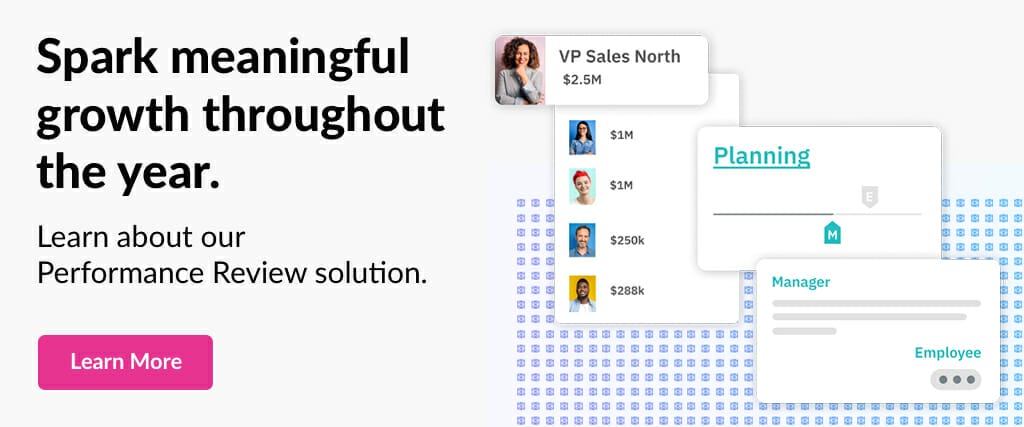How to Improve Performance Management

How to Improve Performance Management
Whether you’re a c-suite executive or a middle manager, you’ve likely wondered how to improve employee performance management. When your employees perform at the top of their skill sets, the organization benefits; safety, quality, productivity, customer satisfaction, and employee engagement improve.
In this article, we set out to give you the tools to improve performance management across your organization. We’ll share an example of performance management, including detailed explanations of the performance management process and performance management plans. Finally, we’ll introduce tools and resources that can help you streamline your efforts in any organization, regardless of size.
What is Performance Management?
According to the Society for Human Resource Management (SHRM), performance management is “the process of maintaining or improving employee job performance through the use of performance assessment tools, coaching, and counseling as well as providing continuous feedback.”
The strategic purpose of performance management, though, goes beyond that. From a strategic perspective, aims of performance management include improving quality and productivity, retaining top performers long-term, preparing employees for future promotion, proactively planning for organizational and industry needs, reducing the risk of illness and injury, protecting the organization from risk, and more.
Characteristics of performance management programs that are effective in achieving the goals they set out to achieve include:
- They’re interactive; both the employee and the manager play an active role in the process.
- They encourage real-time feedback so employees receive coaching in time to repeat positive behaviors and prevent repeating negative behaviors right away.
- They extend throughout the life cycle of employment.
- They leverage technology to limit tedious manual work, errors, and meaningless work – that is, performance management processes that don’t produce meaningful data to drive outcomes.
Leaders and employees alike often wonder about the role of performance management in organizational and personal success, especially in light of recent survey data. More and more employees at all levels indicate that annual performance reviews are, at worst, more disengaging than motivating, and at best, obligatory steps that neither improve performance nor engage employees.
The primary reason for the disconnect between the intention behind performance management work and the actual outcome is structure. Once-a-year performance reviews can’t replace frequent, transparent conversations between employees and their leaders. They can’t replace honest and timely feedback when things go well and when things don’t go as planned. An annual review can never replace clear expectations, adequate training, and real-time coaching.
The reason what is performance management process and what is effective performance management remain top search engine inputs is because leaders are curious about the role of performance management in their teams. Let’s dive in.
Performance Management Cycle
Different organizations take different approaches to performance management, but the overarching cycle is generally similar. In most organizations, the performance management cycle involves goal setting, monitoring, reviewing, and rewarding.
First, the employee and their manager should sit down together and plan for the year ahead. What would the employee like to learn, improve, or achieve in the next year? What would the manager like to see the employee learn, improve, or achieve in the next year? Those aspirations should be outlined in the form of specific, measurable, attainable, measurable, and time-driven (SMART) goals. This is referred to as goal setting or planning in the cycle.
Then, the employee begins working toward their goals while their supervisor observes. This is referred to as monitoring. The monitoring period in many organizations is a year long, but in the most effective performance management processes, is much shorter – 2-12 weeks long.
Periodically and as frequently as possible, the employee and their manager come together to review progress toward goals. During this meeting, they discuss successes, barriers, and needs, ensuring the employee remains focused on the goals initially set and has the tools they need to be successful. This is a great time to incorporate 360-degree feedback, too.
Finally, the last step in the process is rewarding. During this step, the employee is recognized for their achievements through merit increase, incentive payments, promotion, or verbal recognition. Most recommendations for performance management programs suggest frequent review and recognition.
Performance Management Examples
As you begin developing your own performance management models, it’s helpful to have templates to reference. There are several tools and resources used in performance management; examples include key performance indicators, performance appraisals, 360-degree feedback forms, and management dashboards.
There are two ways you can go about building out the tools and resources that will comprise performance management best practices in your organization: you can search for templates and examples online and build from scratch, or you can implement performance management software that offers ready-made, customizable tools and dashboards.
Regardless of the performance management techniques you deploy, you’ll likely standardize certain components of the process: manager check-ins, goal-setting, merit increase calculations, performance appraisals, or peer feedback processes, for example. In any of these cases, having standardized electronic forms can make performance management more convenient and accessible for both leaders and employees, driving participation and engagement across the organization.
Effective Performance Management System
Like most leaders, you likely recognize the importance of an effective performance management system and have identified gaps in your own organization. The more you learn in this arena, perhaps the more you desire practices that empower your teams while freeing up leaders from the burden of tedious manual work. However, researching performance management system examples might leave you feeling overwhelmed. How can you track goals, performance, achievement, and feedback for dozens of employees or more without dropping the ball?
Creating a more effective performance management system is easiest when you have the right tools. Implementing a web-based solution provides a myriad of benefits, giving you access to all of the key elements of an effective performance management system while freeing up leader time for engagement with employees. When looking for a web-based solution, it’s important to compare options to your overall goals; what are you hoping the solution will help you achieve? Some of the key features you might be seeking include customizable forms, manager dashboards, automated email reminders, and key performance indicators.
Learn more about performance management
How AI Helps Human Resources (HR) Make Smarter Talent Decisions
The AI Advantage in HR: Human Resources has always been a data-driven function, but traditional methods of managing smarter talent decisions often fall short in today’s fast-paced business landscape. Spreadsheets, manual performance reviews, and static competency models cannot keep up with the rapid evolution of workforce demands. This is where Artificial Intelligence (AI) steps in.
The Hidden Costs of Spreadsheets-Based Talent Management
HR teams have relied on spreadsheets for years to track employee skills, manage talent assessments, and plan workforce strategies. They seem simple, accessible, and budget-friendly. But beneath the surface, they introduce inefficiencies and hidden costs that hinder organizational agility. This blog explores the unseen risks of spreadsheet-based talent management, the benefits of AI-powered solutions, and how forward-thinking HR leaders are shifting to data-driven workforce planning.
Why Separating Skills Assessments from Performance Really Matters
Separating skills assessments from performance reviews ensures unbiased growth insights, fostering fair talent development. Imagine sitting together in a quiet corner of your office, chatting about employee development. You mention a concern that’s been weighing on your mind: how to help your organization assess skills in a way that genuinely focuses on growth and avoids slipping into formal performance evaluations. As an HR leader, you’re relatively new to skills assessments and want a clear roadmap for doing it right and avoiding common pitfalls.




